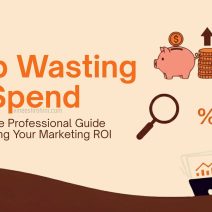Borrowing Money : In today’s rapidly evolving financial ecosystem, the ability to borrow money responsibly is more crucial than ever. Whether it’s for education, starting a business, managing emergencies, or fulfilling personal goals, loans have become an integral part of modern-day financial planning. However, borrowing money without proper understanding can lead to debt traps and financial instability.
Table of Contents
In this comprehensive guide for 2025, we explore the landscape of borrowing, highlight the importance of responsible borrowing, and delve deep into the various loan options available for individuals and businesses alike.
What Is Borrowing and Why Do People Borrow Money?

Borrowing is the act of receiving money from a lender with the promise to repay the amount, typically with interest, within a stipulated timeframe. Borrowing money allows individuals to access funds they do not currently have to fulfill immediate or long-term needs. People borrow money for several reasons:
Also Read : Can You Get a Personal Loan Without a Credit History in 2025?
- Personal expenses: such as weddings, vacations, or purchasing a vehicle.
- Emergency situations: including medical emergencies, urgent repairs, or sudden income loss.
- Education: to cover tuition fees, accommodation, or related expenses.
- Homeownership: via home loans or mortgage financing.
- Business purposes: including startup funding, working capital, or business expansion.
- Debt consolidation: to merge multiple debts into one for easier management.
Borrowing becomes a powerful tool when used wisely. It allows for financial flexibility, supports goal achievement, and can even contribute to building a healthy credit score if managed well.
Understanding the Importance of Responsible Borrowing
As accessible as loans have become, the risk of overborrowing and mismanagement is real. Responsible borrowing is the practice of taking out loans only when necessary, ensuring the borrowed amount is manageable, and repaying on time.
Also Read : Tax Benefits on Personal Loans in India
The consequences of irresponsible borrowing include high-interest burdens, damaged credit scores, legal troubles, and financial stress.
Key Principles of Responsible Borrowing:
- Borrow only what you need: Avoid taking larger loans than required.
- Understand the loan terms: Always read and comprehend the interest rates, tenure, penalties, and repayment schedule.
- Assess repayment capacity: Ensure your income can cover EMIs without affecting essential expenses.
- Compare loan options: Evaluate multiple lenders for the best interest rates and features.
- Avoid multiple loans at once: It can strain your finances and complicate repayment.
Financial literacy in 2025 plays a pivotal role in empowering borrowers to make informed decisions. Government agencies, fintech companies, and educational institutions are increasingly promoting awareness about debt management, interest calculation, and credit behavior.
Top Loan Options in 2025: Choosing the Right Loan Type
As digital banking and fintech innovations reshape the lending landscape, loan options have expanded significantly. Let’s break down the key types of loans in 2025:
1. Personal Loans
Personal loans are unsecured loans offered without the need for collateral. They are versatile and can be used for almost any purpose.
- Loan Amount: ₹10,000 to ₹50 lakhs
- Interest Rates: 9% to 24% p.a.
- Tenure: 1 to 7 years
- Eligibility: Based on credit score, income, and repayment history
- Top Uses: Weddings, travel, debt consolidation, home improvement
Pros: Quick disbursal, minimal paperwork
Cons: High-interest rates for low-credit borrowers
2. Home Loans
Home loans are used to purchase or construct a residential property. With government support for affordable housing, home loans remain a popular option.
- Loan Amount: Up to 90% of property value
- Interest Rates: 6.75% to 10% p.a.
- Tenure: Up to 30 years
- Eligibility: Based on income, employment stability, creditworthiness
Pros: Tax benefits, long tenure reduces EMI burden
Cons: Requires documentation, legal property checks
3. Education Loans
Designed for students pursuing higher education in India or abroad, education loans cover tuition, travel, accommodation, and study materials.
- Loan Amount: ₹1 lakh to ₹50 lakhs
- Interest Rates: 8% to 15% p.a.
- Tenure: Up to 15 years
- Moratorium: Repayment begins after course completion + 6-12 months
Pros: Enables access to quality education, flexible repayment
Cons: Must be repaid even if employment is delayed
4. Business Loans

Offered to entrepreneurs, startups, and established companies, business loans help with expansion, working capital, equipment purchase, and more.
- Loan Amount: ₹50,000 to ₹5 crore
- Interest Rates: 8% to 20% p.a.
- Tenure: 1 to 10 years
- Eligibility: Business vintage, cash flow, credit score
Pros: Boosts business growth, tax deductions on interest
Cons: Can require collateral or guarantees
5. Vehicle Loans
Vehicle loans cover the purchase of two-wheelers, cars, or commercial vehicles. In 2025, green vehicle loans for EVs are also gaining popularity.
- Loan Amount: 70% to 100% of vehicle value
- Interest Rates: 7.5% to 12% p.a.
- Tenure: Up to 7 years
Pros: Enables easy vehicle ownership, special EV loan schemes
Cons: Vehicle is hypothecated to the lender until repayment
6. Gold Loans
Gold loans are secured loans where gold jewelry is pledged. Popular for short-term needs due to quick disbursal and low documentation.
- Loan Amount: Based on gold purity and weight
- Interest Rates: 7% to 15% p.a.
- Tenure: 3 months to 2 years
Pros: Fast processing, no credit score needed
Cons: Risk of losing gold in case of default
7. Credit Card Loans
Credit cards offer revolving credit with interest-free periods. Many providers also offer pre-approved loans on card limits.
- Loan Amount: Varies as per limit
- Interest Rates: 18% to 48% p.a.
- Tenure: Flexible EMIs for larger purchases
Pros: Convenience, rewards
Cons: High interest on missed payments
8. BNPL (Buy Now Pay Later) Loans
Increasingly popular in e-commerce, BNPL allows consumers to split payments or defer them.
- Loan Amount: ₹1,000 to ₹1,00,000
- Interest Rates: 0% to 24% p.a.
- Tenure: Up to 3 to 12 months
Pros: Instant credit, no upfront cost
Cons: Hidden charges, can lead to overspending
Fintech and Digital Lending Trends in 2025
The Indian lending ecosystem has been revolutionized by technology. Key trends shaping responsible borrowing in 2025 include:
- AI-Powered Credit Scoring: Alternative data like digital transactions, utility bills, and social behavior now affect credit approval.
- Digital KYC & Instant Approvals: E-KYC and API integrations speed up disbursals.
- Embedded Finance: Platforms like Amazon and Flipkart now offer loans during checkout.
- Regulatory Tech (RegTech): RBI’s tighter norms are being implemented via automated compliance.
- P2P Lending Platforms: Platforms like Faircent and LenDenClub connect individual borrowers with lenders, democratizing credit access.
Borrowers must stay vigilant about data privacy, fake apps, and unauthorized lenders. Always borrow through RBI-registered NBFCs or banks.
Credit Score and Its Impact on Borrowing
A credit score is a numerical representation of your creditworthiness, typically ranging from 300 to 900. In 2025, credit scores play a critical role in determining loan eligibility, interest rates, and even approval speed.
- 750+ = Excellent: Easy approvals, lower interest rates
- 650–749 = Good: May qualify, slightly higher interest
- Below 650 = Risky: Hard to get loans, high interest
Regularly monitor your credit report, avoid late payments, and maintain a low credit utilization ratio to boost your score.
Loan Comparison Tips: How to Choose the Best Loan
With a multitude of choices, selecting the best loan can be confusing. Here’s how to make an informed decision:
- Compare Interest Rates: Even a 1% difference can save thousands.
- Check for Processing Fees: Some lenders waive it for online applications.
- Evaluate Flexibility: Look for prepayment options and foreclosure terms.
- Assess Turnaround Time: Choose based on urgency.
- Verify Lender Credentials: Stick to RBI-licensed institutions.
Use online tools like loan calculators, EMI estimators, and comparison sites to analyze offers side by side.
Common Loan Mistakes to Avoid in 2025
- Not reading the fine print: Overlooking terms like prepayment penalties or hidden charges.
- Overborrowing: Taking multiple loans without budgeting repayment.
- Ignoring insurance: Loan protection insurance can safeguard against job loss or death.
- Choosing long tenures blindly: Low EMIs mean more interest outgo in the long run.
- Using high-interest loans for consumption: Avoid credit card loans for luxuries or holidays unless repayable within the interest-free period.
Government Support and Subsidy Schemes in 2025
The Indian government continues to support various sectors through subsidized loan schemes:
- PMEGP (Prime Minister’s Employment Generation Programme)
- MUDRA Loans (Shishu, Kishor, Tarun) for MSMEs
- Stand-Up India Scheme for Women and SC/ST Entrepreneurs
- Education Loan Interest Subsidy Schemes
- Credit Guarantee Funds
These schemes reduce borrowing costs, especially for rural, underprivileged, or startup borrowers.
Responsible Borrowing: Tips for Financial Health
Incorporate these financial habits to manage your loans effectively:
- Automate EMI Payments: Avoid missed payments.
- Maintain an Emergency Fund: At least 3–6 months of expenses.
- Limit Debt-to-Income Ratio: Keep it under 40% for financial safety.
- Track Spending: Use budgeting apps to monitor loan repayments and daily expenses.
- Seek Help If Needed: Financial advisors or credit counseling can help restructure debt.
Conclusion

Borrowing money in 2025 is easier, faster, and more accessible than ever before — but it’s also riskier if done irresponsibly. With the surge in digital lending platforms, embedded finance, and innovative loan products, borrowers must be more informed, vigilant, and financially literate.
Buy Now : How To Invest Your Money – Master Class
Whether you’re opting for a personal loan, home loan, education financing, or a credit card-based loan, always prioritize responsible borrowing practices, compare your options, understand your repayment capabilities, and make borrowing a stepping stone toward financial empowerment — not a burden. The goal is to borrow smartly, repay responsibly, and build a secure financial future.
Disclaimer : This blog post is for informational purposes only. Loan terms, interest rates, and features mentioned are indicative and may vary based on lender policies and market conditions. Always consult with a certified financial advisor or contact the respective financial institution before making borrowing decisions.
Keywords : Borrowing Money – Borrowing Money 2025 – Borrowing Money Guide








